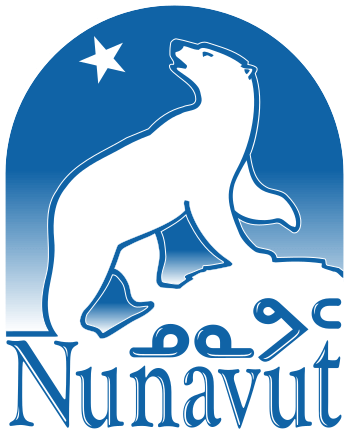Nunavut 101
Nunavut (which means "our land" in the Inuit language) became Canada's third and newest territory on April 1, 1999. The Territory spans two million square kilometres and covers one-fifth of Canada's total landmass. The capital, Iqaluit (formerly Frobisher Bay), is located on the southeastern end of Baffin Island and has approximately 8,000 residents.
Nunavut nurses work in the 25 community health centers located across three time zones. The territory is divided into three regions: the Baffin region, which consists of 13 communities (Eastern Standard Time); the Kivalliq region(Central Standard Time), which consists of seven communities; and the Kitikmeot region, (Mountain Standard Time) which consists of five communities. The population was 41,159 as of July 2024.
Nunavut has three official languages – the Inuit language (Inuktitut and Inuinnaqtun), English and French. Inuit make up about 85% of Nunavut's population. There is a small French-speaking population of about 5% residing on Baffin Island, predominantly in the capital city of Iqaluit.
Nunavut also has the youngest population in Canada with the median age being 26.7 years. Approximately 53 50% of the population is under the age of 25.
Nunavut is cold about 10 months of the year. However, snow is possible even in the summer. Iqaluit, located less than 320 kilometres from the Arctic Circle, summertime highs on average hover around 11ºC with winter temperatures ranging from -26ºC to -33ºC. In winter the night sky shimmers with the nightly dance of the aurora borealis, the northern lights.
The territory is home to a large variety of wildlife: muskox and herds of caribou roam the mainland tundra along with grizzlies and many smaller animals. Polar bears hunt along the ice floes for seals and walruses and whales swim in the icy waters, and many species of birds migrate to the Arctic in summer.
Community Services
Most Nunavut communities are isolated geographically and are accessible only by air and sea. Each community has an airline service, although it can be expensive. Travelling in and out of Nunavut often requires multiple flights, and overnight stops are not uncommon.
The Northern Stores and/or the local Co-op stores and Canada Post serve all communities. Food, household supplies and personal care products are more expensive than in the “south.” The Internet, which is available in all communities, helps reduce the appearance of isolation and brings a world of mail-order products to consumers.
There are alternatives to local food shopping. Many residents use yearly sealift orders. Sealift or barge orders, allows canned, dry and frozen food to be shipped by sea into communities during the summer.
Internet banking is available in all Nunavut communities. Major banks have branches in Cambridge Bay (Royal Bank), Iqaluit (CIBC, Royal Bank and First Nations Bank of Canada) and Rankin Inlet (CIBC and Royal Bank). Most communities have ATMs at the local Northern Store and/or the Co-op. Credit cards are accepted by many but not all stores and services.
The Royal Canadian Mounted Police (RCMP) provides policing services in every community in Nunavut. Many communities also employ local by-law officers.
Elementary and high schools are in every community with Francophone language schools (elementary and junior high) available in Iqaluit.
Weather
Nunavut is a vast territory and the weather can vary widely. Usually inland areas are warmer in July and August with the western regions warmer than Baffin Island. Spring temperatures are more consistent throughout Nunavut. Cooler days are tempered by sunshine. From late March to the end of May the sun reflected off the snow and ice is strong enough that sunblock is recommended.
Be prepared for shorter days and cold temperatures in the winter. The further north, the shorter the winter days get. Communities north of the Arctic Circle do not see the sun for extended periods at a time. Conversely, during the summer, the further north you go the longer the number of hours of daylight.
Low humidity reduces the impact of the cold, making a -20ºC day feel like -5ºC in southern Canada. January through March are the coldest months. Wind chill factors are often more significant than the actual air temperature.
Much of the Arctic is classified as a polar desert in terms of humidity. There are long stretches of dry, cloudless days without precipitation. Northern communities get far less snow than many larger southern centers.
Throughout most of the territory, cool spring temperatures mean that snow cover generally does not finish melting until June. For most of Nunavut, the only months without snow are late June, July and August. Sea ice melts later. Most rain falls after the sea ice breaks-up, usually between mid-July and the end of August.
Blizzards are common in October and November and February through April.
Most communities experience up to 24 hours of daylight from May through August, and up to 24 hours of darkness from November through February. In the late spring and summer months, the continuous sunlight can affect people’s sleep habits. Nunavut nurses, and other community members, cover their bedroom windows or sleep with eye masks. Conversely, in the winter some people are affected by the lack of light. Light therapy lamps help.


